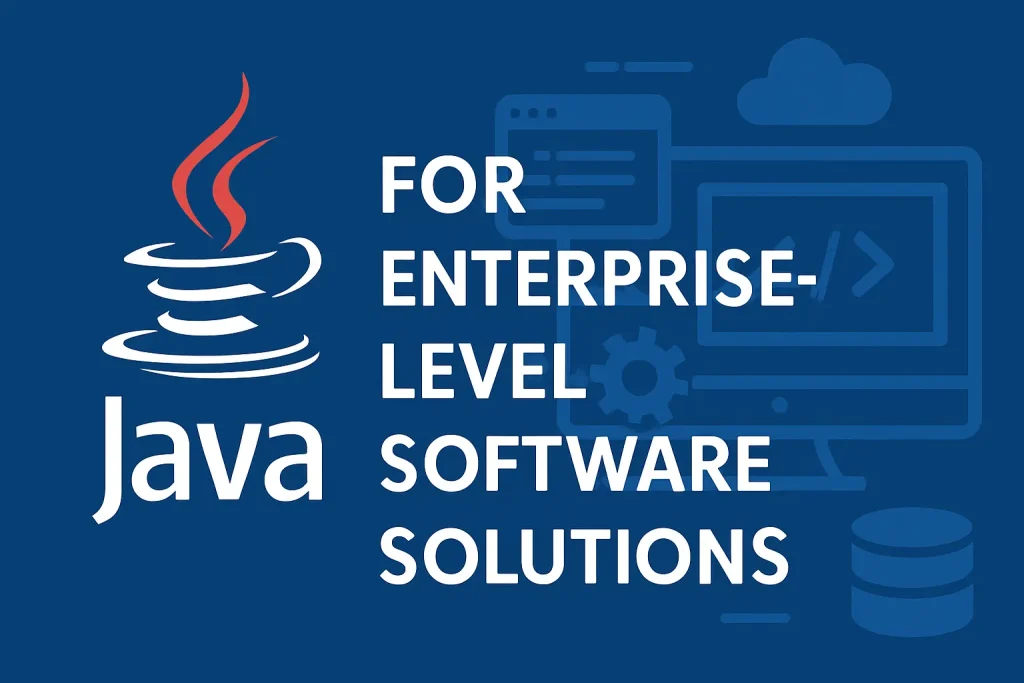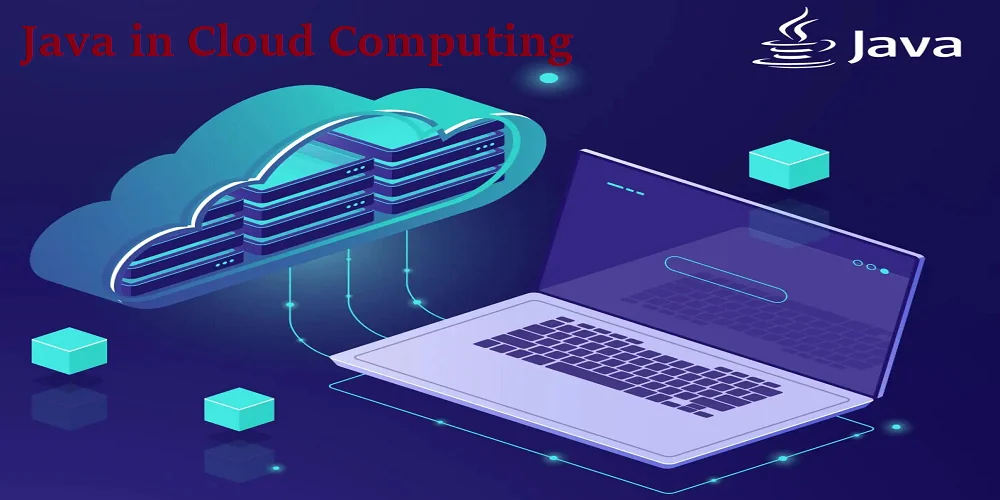Are you still thinking Java is yesterday’s technology? Give it serious thought.
Every time you use a banking app, stream your favorite show, or shop online, there’s a high chance Java is quietly working behind the scenes, powering millions of interactions every second.
What is Java technology, and why does it continue to play such a critical role in modern digital experiences?
Java’s evolution has kept it at the forefront of enterprise innovation, driving Android development, cloud-native systems, AI integrations, and massive backend infrastructures that scale reliably.
In a world that’s constantly chasing “the next big thing,” its strength lies in its stability, adaptability, and mature ecosystem.
In this blog, you’ll explore what it is and how its architecture ensures consistent performance across platforms. You’ll also learn about the core features that set it apart and why it continues to shape modern software development in 2025 and beyond.
Java is a platform-independent language and runtime ecosystem for building secure, scalable, high-performance applications.
Core Components:
- JVM: Executes bytecode
- JDK: Developer tools
- JRE: Runtime environment
- Java API: Standard libraries
- Data access is restricted at granular levels using Column and Row-Level Security (Dynamic Data Masking).
Key Features: OOP design, platform independence, strong security, automatic memory management, robust performance, and a vast framework ecosystem (Spring, Hibernate, Jakarta EE).
Use Cases: Enterprise apps, Android, web platforms, cloud-native microservices, big data, and IoT.
Trusted by: Netflix, Uber, Amazon, Airbnb for massive, fault-tolerant backends.
Why it lasts: Ongoing JVM innovation, enterprise reliability, strong tooling, and cloud-native adaptability.
What is Java Technology?
Java technology is a programming language and computing platform first introduced by Sun Microsystems in 1995, now owned by Oracle. It was designed around a groundbreaking principle, “Write Once, Run Anywhere”, enabling developers to build applications that run across operating systems without modification.
At its core lies the Java Virtual Machine (JVM), which executes compiled Java bytecode and ensures consistent performance across diverse environments. This JVM-based architecture forms the backbone of the Java technology stack, powering everything from Android apps and web servers to large-scale enterprise and cloud systems.
Core Components of Java Technology
The strength of Java lies in its well-structured architecture. Together, its components—JVM, JDK, JRE, and API—create a unified ecosystem that powers everything from web servers to Android apps.
1. Java Virtual Machine (JVM)
The JVM acts as the execution engine of the platform.
It converts Java bytecode into native machine code for the host operating system, allowing its applications to run across Windows, Linux, macOS, and embedded systems without platform-specific builds. It also enforces Java’s security model through bytecode verification and sandboxing.
2. Java Development Kit (JDK)
The JDK is the developer’s toolkit, including the Java compiler (javac), debugger, documentation tools, and the JRE.
Developers use it to write, compile, and test the code. Since Java 9, the Java Platform Module System (JPMS) allows developers to structure their code into smaller, independent modules for improved scalability and maintainability.
3. Java Runtime Environment (JRE)
The JRE provides the libraries, JVM, and runtime components required to execute Java applications. It serves as the operational environment that ensures consistent runtime behavior across platforms.
4. Java API (Application Programming Interface)
The Java API offers thousands of pre-built classes and methods covering areas, such as networking, file I/O, GUI creation, and database access. This extensive standard library empowers developers to build feature-rich applications quickly and efficiently.
Java’s power lies in how seamlessly the JDK, JRE, JVM, and API work together to deliver a consistent and secure backend java technology environment.
How Does Java Technology Work?
Java’s reputation for efficiency and portability is established on a meticulously engineered process that bridges human logic and machine execution.
Each program passes through a well-orchestrated cycle, from writing source code to optimized runtime performance.
Here’s a closer look at how this process unfolds:
1. Writing Source Code
Developers begin by writing Java source code in .java files using IDEs like IntelliJ IDEA, Eclipse, or NetBeans.
Each program follows the principles of object-oriented programming (OOP), defining classes, methods, and objects that make the code modular, reusable, and easy to maintain.
2. Compilation
Once written, the Java compiler (javac) translates the source code into bytecode, stored in .class files. Unlike machine code, bytecode isn’t tied to any single operating system or processor. The same program can execute seamlessly on Windows, Linux, macOS, or even mobile environments without modification.
3. Bytecode Verification
Before execution, the Java Virtual Machine (JVM) performs a crucial security check. It verifies the bytecode to ensure it adheres to the safety rules—preventing malicious code, unauthorized memory access, or type mismatches.
This verification phase helps in developing secure enterprise and financial applications, where data integrity and sandboxed execution are critical.
4. Execution via JVM and JIT Compiler
Once verified, the JVM’s Execution Engine interprets the bytecode or compiles it into native machine code using the Just-In-Time (JIT) compiler.
The JIT continuously monitors runtime performance, identifying frequently executed code paths and optimizing them dynamically for speed. It enables the applications to maintain high performance while remaining platform-independent.
Key Features of Java Technology
Java’s core features have evolved without breaking the principles that made it a foundation for modern development. Every element of the design reinforces scalability, reliability, and cross-platform performance, making it a preferred technology for enterprise and cloud systems even today.
Let’s take a closer look at what makes it so enduring.
1. Object-Oriented Design
Java is built on the principles of object-oriented programming (OOP), allowing developers to organize code into modular, reusable components.
This structure enhances maintainability and collaboration across large development teams—one of the reasons it continues to dominate enterprise and web development.
2. Platform Independence
When Java code is compiled into bytecode, it runs on any device or OS with a JVM, with no need for system-specific builds. This flexibility makes it ideal for cross-platform applications, distributed systems, and multi-environment enterprise setups.
3. Built-In Security
Java was engineered with security as a top priority. Its Security Manager, bytecode verifier, and automatic memory management prevent unauthorized access, buffer overflows, and common vulnerabilities.
That’s why it remains the go-to choice for fintech, healthcare, and government applications where data integrity is crucial.
4. Robust and Reliable
Java’s resilience comes from its built-in exception handling, strong type checking, and automatic garbage collection. These features protect applications from unexpected failures and optimize memory usage, ensuring consistent uptime—crucial for mission-critical workloads.
5. High Performance with JIT Compilation
The Just-In-Time (JIT) compiler converts frequently executed bytecode into native machine code at runtime, significantly enhancing performance. The hybrid approach gives Java the efficiency of compiled languages while maintaining the flexibility of interpreted ones.
7. Extensive API Ecosystem
Java’s Application Programming Interface (API) ecosystem is vast, covering everything from networking and I/O operations to UI components and database integration. Developers benefit from libraries and frameworks like Spring, Hibernate, and Jakarta EE, which accelerate development and simplify complex tasks.
Applications and Use Cases of Java
Java’s versatility is reflected in its reach across multiple industries and technology domains.
1. Enterprise Applications
Java powers mission-critical enterprise systems, ERP solutions, banking applications, and CRM platforms. Frameworks like Spring, Hibernate, and Jakarta EE enable secure, large-scale deployments.
2. Mobile Development
Android, which dominates global mobile markets, is built on Java. Most Android applications use it or Kotlin, both of which use the JVM’s efficiency.
3. Web Applications
Technologies like Servlets, JSP, and Spring MVC help developers create dynamic, scalable, and secure web applications that handle millions of users daily.
4. Cloud & Microservices
Java Frameworks like Spring Boot, Micronaut, etc., also enable cloud-native applications. Its smooth integration with Docker, Kubernetes, and AWS Lambda makes it ideal for distributed systems.
5. IoT & Big Data
Open-source frameworks such as Apache Hadoop and Spark leverage this language for high-performance data processing, while IoT systems use its portability for device-level programming.
Powered by a Java-based backend with multi-factor authentication and PSBT support, the solution ensured data protection and a seamless user experience.
How Businesses Leverage Java Technology Today
Java continues to anchor digital ecosystems across industries because of its adaptability. Leading enterprises use the technology to maintain consistent performance, support high transaction volumes, and ensure long-term scalability.
- Netflix relies on Java-based microservices to deliver billions of streaming hours seamlessly, ensuring fault tolerance and rapid recovery across its distributed systems.
- Uber leverages it to process real-time ride-matching and dynamic pricing algorithms that depend on ultra-low-latency performance.
- Amazon and Airbnb use this to support scalable backend architectures capable of handling millions of concurrent API requests efficiently.
How Java Compares with Modern Languages
As programming ecosystems evolve, newer languages like Python, Kotlin, and Go have entered the mainstream—each excelling in specific domains such as AI, mobile, or cloud computing. Yet, it continues to stand tall as a balanced choice between performance, scalability, and ecosystem maturity.
Here’s how it compares with other popular languages:
| Feature | Java | Python | Kotlin | Go |
| Performance | High (JIT optimized) | Moderate | High | Very High |
| Ecosystem | Mature, Enterprise-Ready | AI/ML-focused | Mobile/Android | Cloud/Backend |
| Syntax | Verbose | Concise | Concise | Minimal |
| Community Support | Extensive | Massive | Growing | Moderate |
Why Java Still Matters in 2025 and Beyond
As discussed extensively above, Java remains relevant because its architecture, ecosystem, and enterprise trust combine to deliver long-term value.
Here are the key drivers:
Cloud-Native Momentum
Modern Java frameworks such as Spring Boot and Quarkus enable developers to build microservices and cloud-native applications with ease. Its compatibility with containerization, orchestration platforms, and serverless environments ensures it remains a solid choice for distributed systems and hybrid cloud architectures.
JVM-Based Innovation
The JVM ecosystem continues to evolve. Languages like Kotlin, Scala, and Groovy run on the JVM, leveraging existing Java infrastructure and libraries. It ensures extended relevance, since organizations can adopt newer languages while retaining its established platforms and tooling.
Enterprise Trust and Support
With decades of production deployment, it has proven its stability, backward compatibility, and enterprise-grade security. Many financial, healthcare, and telecom systems are built on Java—organizations trust it for mission-critical workloads.
According to the 2024 survey, it is still a foundational technology for developers and enterprises despite the emergence of newer languages.
Challenges or Limitations of Java
Regardless of its enduring success, Java, like any mature technology, comes with certain trade-offs that developers must weigh carefully.
Let’s understand what they are:
• Verbose Syntax
Compared to newer languages like Kotlin or Python, Java’s syntax can feel wordy, often leading to longer codebases and slower prototyping cycles. However, modern IDEs, Lombok, and record classes introduced in recent versions have mitigated much of this overhead.
• Startup Latency
Java applications, particularly microservices or serverless deployments, may experience slower startup times due to JVM warm-up requirements. Frameworks such as GraalVM, Quarkus, and Spring Boot 3 now address this through ahead-of-time (AOT) compilation and lightweight runtime optimizations.
• Memory Consumption
The JVM’s garbage collection and runtime abstractions can consume more memory as compared to languages like C++ or Rust. Yet, the trade-off ensures stability, security, and cross-platform portability—critical for enterprise-scale systems.
Ultimately, while these limitations exist, they are being steadily eroded by ongoing JVM innovations and community-driven enhancements.
For most modern enterprise and cloud-native applications, the robustness and long-term maintainability it offers outweigh these drawbacks.
Partner with Aegis Softtech for Custom Java Development
While Java provides the foundation, leveraging it effectively requires deep technical expertise and architectural foresight.
Aegis Softtech’s Java development team helps enterprises architect, modernize, and optimize applications across frameworks like Spring Boot, Hibernate, and Jakarta EE, ensuring scalability without complexity.
We assist organizations in modernizing legacy systems, integrating cloud-native APIs, and developing robust, high-performance applications that stay agile, secure, and future-ready.
When you’re ready to move from exploring to executing, a free 30-minute consultation with our senior Java developers is your bridge from strategy to solution.
FAQs
Q: What is Java used for?
It is used to build a wide range of applications, from enterprise software and web applications to Android mobile apps, IoT devices, and large-scale cloud solutions. Its stability and scalability make it a top choice for businesses and developers alike.
Q: How does Java handle memory management and performance?
It uses an automatic garbage collection system that continuously reclaims memory occupied by unused objects. This minimizes memory leaks and ensures smoother performance, especially in long-running applications and enterprise systems.
Q: What role does Java play in modern technologies like AI and cloud computing?
In AI, it is used for machine learning frameworks and data processing tools like Weka, Deeplearning4j, and Hadoop. In the cloud, it powers scalable backend services across AWS, Google Cloud, and Azure—aligning with current trends in Java technology.
Q: What’s the difference between Java and JavaScript?
Java is a full-fledged, object-oriented programming language; JavaScript is a scripting language for front-end interactivity.



